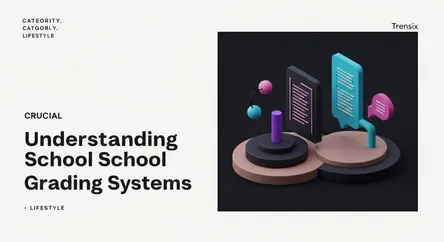Lifestyle
Understanding School Grading Systems

Discover the methods and purpose behind educational grading. Learn how student performance is assessed and why these systems are evolving.
What is it?
Grading is the standardized process used in education to evaluate and communicate a student's performance, understanding, and academic achievement. Typically represented by letter grades (A, B, C), percentages, or numerical scores, this system provides a benchmark for both students and educators. The primary goal of grading is to offer feedback on learning progress, identify areas needing improvement, and certify a student's level of mastery in a particular subject. It serves as a formal record of academic work, often compiled into a report card or transcript that summarizes performance over a specific period.
Why is it trending?
Discussions around grading are trending due to a major push for educational reform. Traditional grading models are being challenged for potentially stifling creativity and promoting rote memorization over deep understanding. Educators and policymakers are exploring alternative methods like standards-based grading, which assesses mastery of specific skills, and competency-based education. This shift is fueled by concerns over grade inflation, equity, and the desire to provide more meaningful, actionable feedback that supports long-term learning rather than just short-term performance on tests.
How does it affect people?
Grading has a profound impact on students' lives. It can influence motivation, self-esteem, and mental health, with high stakes often leading to significant stress and anxiety. Grades are critical for advancing to higher education levels, qualifying for scholarships, and securing future career opportunities. For educators, grading systems shape their teaching methodologies and how they structure their curriculum. For parents, grades are a primary tool for understanding their child's academic progress, often guiding their involvement and support at home. The ongoing evolution of grading aims to make this impact more positive and constructive for everyone involved.